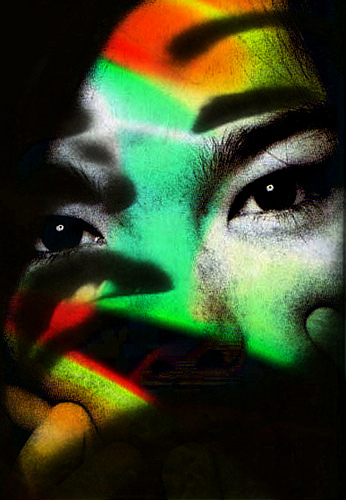MEDIA ROOTS— Plaintive ripples of harp-like plucked string sounds of Björk’s invented gameleste set the aural stage for the Icelandic singer in Biophilia, her eigth studio album. ‘Moon‘ is a gentle opener, and tesla coil rhythms reminiscent of slightly softened saw-wave synth sounds follow with ‘Thunderbolt‘ procession, ushering the listener into Björk’s latest opus.
The literal and metaphoric are then joined with sculptures of sight and sound in ‘Crystalline‘.
‘Crystalline’
In the post-Napster, post-Bit Torrent world, when record companies reel from the digitisation of music, Björk continues to engage listeners on multiple levels and keep them wanting the full package beyond the downloaded mp3.
With Biophilia, Björk delivers a musical experience which functions as a living multimedia art installation. The ‘ultimate edition’ of the album comes replete with thematic imagery, stories to each song, and more. Ever the forward-thinking artist, Björk embraces modern app tech and user-interactivity, such as the iPad suite, allowing listeners to easily remix and re-imagine her music. Biophilia, Björk revealed, was “partly composed on an iPad.”
 Björk
once noted, in response to criticisms of electronic music being soulless, that if
it didn’t have soul, it’s because one didn’t put it there. Björk shows us just how much humanity
electronic music can embody.
Björk
once noted, in response to criticisms of electronic music being soulless, that if
it didn’t have soul, it’s because one didn’t put it there. Björk shows us just how much humanity
electronic music can embody.
“Cosmogony,” like much of this album, is a truly ambitious exploration of human existence, a sensory exploration of the inner and outer universe.
Biophilia deserves mindful listening, challenging the listener to empathise, as in “Hollow,” with its fugue-like vocal swirls and pedal-point organ-synth tones, before reaching its electronic climax propelling forward continuity of DNA. “Now come forth, all species,” sings Björk biophilically.
Here, the journey of life means flourishing and affliction. “Virus,” gently and rapturously reminds us of the reciprocity of living bonds. “Like a virus, patient hunter / I’m waiting for you, I’m starving for you / My sweet adversary.”
One may recognise signature phonologies, as in “Dark Matter.” But sheer conviction intertwined with tonal musicality has always made Björk’s songs function despite unconventional phrasings, which accommodate unusually expressive lyricism.
Some listeners may complain Björk’s ‘artiness’ is too much or that she’s tried too hard to prioritise ‘abstraction’ over ‘songs’ or sing-along ‘pop songs.’ Yet, this offering requires time to grow on the psyche. As an ever-evolving artist, Björk takes risks that pushes boundaries.
“Sacrifice” is an example of pushing the tone poem form, inversely punctuated with familiar reassurances of rhythmic regularity, impelling listeners to reconsider the comforts of the familiar and our own self-imposed limits as listeners.
From the high-energy whirlwinds of “Mutual Core” and “Náttúra” to the meditative counterpoint of “Solstice,” Biophilia glides across and through realms of living energy, form, and motion.
The fact that Björk has largely self-produced Biophilia points to the crystallisation of her artistry, whilst maintaining her unique integrity. We bear witness to an adventurous and seasoned artist throwing down. With Biophilia, Björk reaches, quite successfully, for new ground, new planes, and new dimensions.
Written by Felipe Messina for Media Roots
Photo by flickr user Alexandre Hamada Possi










